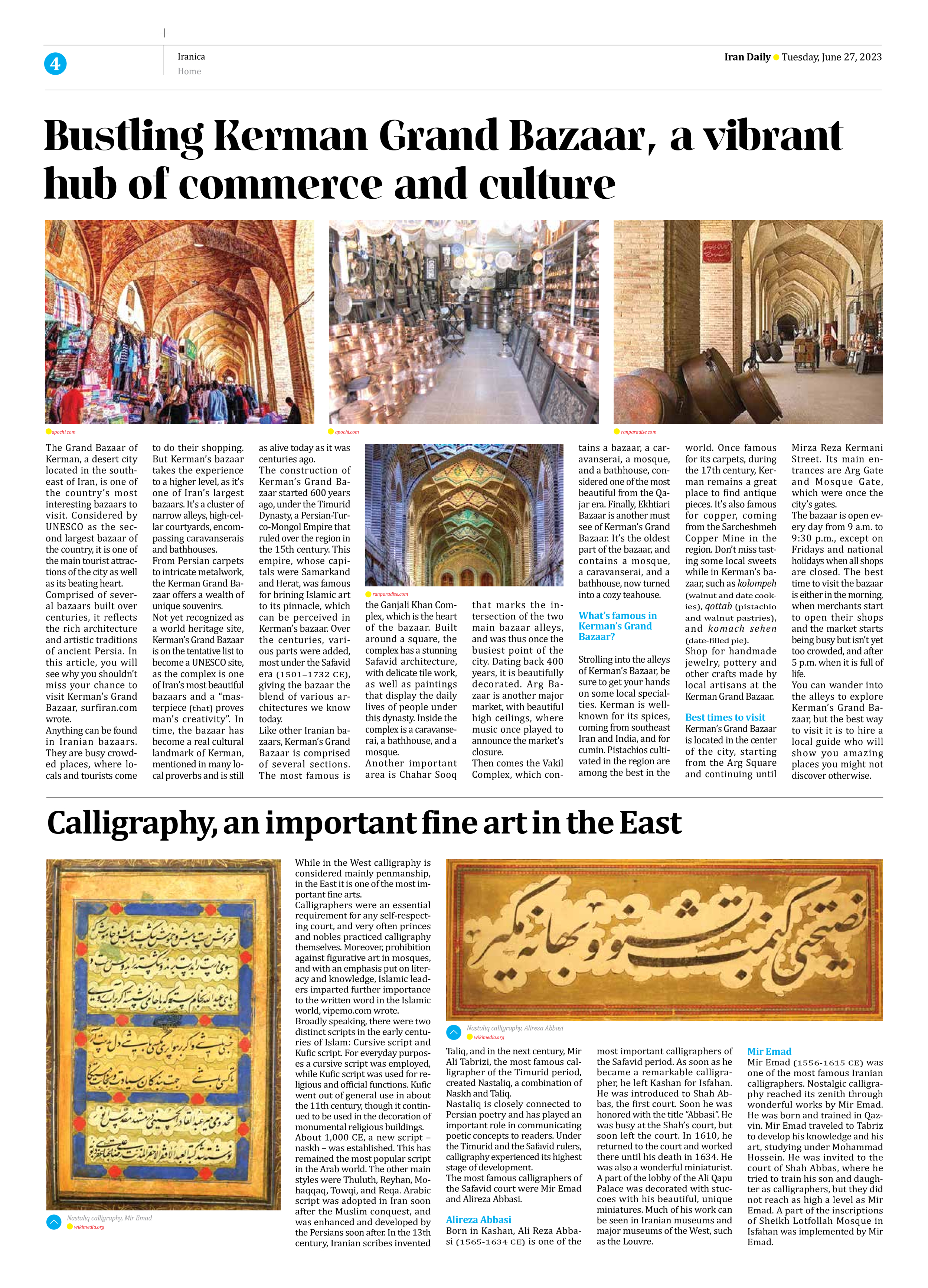
Calligraphy, an important fine art in the East
While in the West calligraphy is considered mainly penmanship, in the East it is one of the most important fine arts.
Calligraphers were an essential requirement for any self-respecting court, and very often princes and nobles practiced calligraphy themselves. Moreover, prohibition against figurative art in mosques, and with an emphasis put on literacy and knowledge, Islamic leaders imparted further importance to the written word in the Islamic world, vipemo.com wrote.
Broadly speaking, there were two distinct scripts in the early centuries of Islam: Cursive script and Kufic script. For everyday purposes a cursive script was employed, while Kufic script was used for religious and official functions. Kufic went out of general use in about the 11th century, though it continued to be used in the decoration of monumental religious buildings.
About 1,000 CE, a new script – naskh – was established. This has remained the most popular script in the Arab world. The other main styles were Thuluth, Reyhan, Mohaqqaq, Towqi, and Reqa. Arabic script was adopted in Iran soon after the Muslim conquest, and was enhanced and developed by the Persians soon after. In the 13th century, Iranian scribes invented Taliq, and in the next century, Mir Ali Tabrizi, the most famous calligrapher of the Timurid period, created Nastaliq, a combination of Naskh and Taliq.
Nastaliq is closely connected to Persian poetry and has played an important role in communicating poetic concepts to readers. Under the Timurid and the Safavid rulers, calligraphy experienced its highest stage of development.
The most famous calligraphers of the Safavid court were Mir Emad and Alireza Abbasi.
Alireza Abbasi
Born in Kashan, Ali Reza Abbasi (1565-1634 CE) is one of the most important calligraphers of the Safavid period. As soon as he became a remarkable calligrapher, he left Kashan for Isfahan. He was introduced to Shah Abbas, the first court. Soon he was honored with the title “Abbasi”. He was busy at the Shah’s court, but soon left the court. In 1610, he returned to the court and worked there until his death in 1634. He was also a wonderful miniaturist. A part of the lobby of the Ali Qapu Palace was decorated with stuccoes with his beautiful, unique miniatures. Much of his work can be seen in Iranian museums and major museums of the West, such as the Louvre.
Mir Emad
Mir Emad (1556-1615 CE) was one of the most famous Iranian calligraphers. Nostalgic calligraphy reached its zenith through wonderful works by Mir Emad. He was born and trained in Qazvin. Mir Emad traveled to Tabriz to develop his knowledge and his art, studying under Mohammad Hossein. He was invited to the court of Shah Abbas, where he tried to train his son and daughter as calligraphers, but they did not reach as high a level as Mir Emad. A part of the inscriptions of Sheikh Lotfollah Mosque in Isfahan was implemented by Mir Emad.







